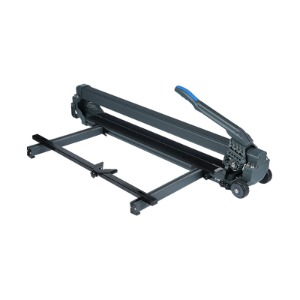
Laser tile cutters are becoming increasingly popular tools in both professional and DIY tiling projects due to their precision and efficiency. Unlike traditional tile cutters, which rely on manual pressure or rotating blades, a laser tile cutter uses a laser beam to make precise cuts. This makes it an excellent choice for materials that require high accuracy and clean edges. But what materials can a laser tile cutter actually cut?
1. Ceramic Tiles
One of the common materials that a laser tile cutter can handle is ceramic. Ceramic tiles are widely used for flooring, wall installations, and backsplashes due to their versatility and aesthetic appeal. Laser tile cutters can easily slice through ceramic tiles with high precision, allowing for clean, straight cuts without chipping or cracking the tile. This makes them ideal for both standard and intricate tile designs, where a high level of accuracy is required.
2. Porcelain Tiles
Porcelain tiles are denser and harder than ceramic tiles, making them more challenging to cut. However, a laser tile cutter can handle porcelain as well. The laser's concentrated heat allows it to slice through porcelain tiles effectively, providing smooth and accurate cuts. It is especially useful when working with high-end porcelain tiles for modern interiors, as it minimizes the risk of damaging the tile surface. Although laser cutting porcelain tiles may require a more powerful laser, it can deliver flawless results.
3. Glass Tiles
Glass tiles are another material that benefits from the precision of a laser tile cutter. Cutting glass with traditional methods can often lead to sharp edges and cracking, but the laser's heat allows it to make smoother cuts. Laser tile cutters are particularly useful for creating intricate patterns or custom designs on glass tiles. Whether used for decorative backsplashes or artistic mosaic work, laser cutters help ensure that the tiles maintain their clarity and beauty.
4. Marble and Stone Tiles
Marble and stone tiles are highly durable and elegant, but they can be difficult to cut using traditional methods. Laser tile cutters can handle stone and marble tiles with great precision. The intense heat of the laser beam allows for smooth, detailed cuts without causing fractures or chips, making it an ideal choice for high-end residential or commercial projects. Laser cutting is particularly advantageous when intricate designs or thin lines are required in marble or stone tiles.
5. Terracotta Tiles
Terracotta tiles are often used in rustic or Mediterranean-style homes. These tiles are typically softer than porcelain or stone, making them easier to cut. A laser tile cutter can effortlessly cut through terracotta, providing smooth edges and preventing the roughness that can sometimes occur with traditional cutting tools. Laser cutting allows for both straight and curved cuts, making it a great option for creative tile work.
A laser tile cutter is capable of cutting a wide range of materials, including ceramic, porcelain, glass, marble, stone, and terracotta tiles. Its precision and ability to handle difficult materials make it a valuable tool for both professionals and DIY enthusiasts. Whether you're working with intricate patterns or tough, dense materials, a laser tile cutter can provide the accuracy and clean finish you need, making your tiling projects easier and more efficient.


 English
English русский
русский Español
Español italiano
italiano